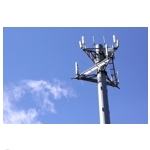 Small, independent wireless carriers have important decisions to make regarding their transition to 4G (and 3G in many cases). Thanks to roaming and other business conditions of the legacy wireless business, many small rural carriers could build a decent wireless business in a voice dominated 2G world. But as the wireless game shifts to mobile broadband, smaller carriers are getting squeezed, and new creative approaches are necessary for many of them (although not all) to build on their 2G legacy in the 3G and emerging 4G marketplace.
Small, independent wireless carriers have important decisions to make regarding their transition to 4G (and 3G in many cases). Thanks to roaming and other business conditions of the legacy wireless business, many small rural carriers could build a decent wireless business in a voice dominated 2G world. But as the wireless game shifts to mobile broadband, smaller carriers are getting squeezed, and new creative approaches are necessary for many of them (although not all) to build on their 2G legacy in the 3G and emerging 4G marketplace.
Increasingly, rural wireless carriers are looking to strategic business partners to help them make the transition to a wireless business where data will dominate. Important issues including uncertainty on data roaming relationships and lack of scale are more pronounced in a 3G/4G world, opening the door for companies like Globecomm and others to offer ‘hosted’ wireless solutions to rural wireless providers.
These hosted solutions give rural wireless carriers options to outsource portions of their wireless network including switching and other core elements, presumably at lower cost than building this capability themselves. In effect, these hosted solutions inject an element of the cloud into rural wireless, since hosting of these network elements can be in different physical locations than the rural carrier’s wireless network.
On the heels of their recent Verizon Rural 4G announcement, Chariton Valley is the latest rural wireless carrier to take this path, with Globecomm announcing that they will host Chariton Valley’s “… enhanced and extended GSM wireless network.” Globecomm tells telecompetitor that Chariton Valley intends to take this a step further with them, as they will also turn to Globecomm for a hosted CDMA version in the near future, providing dual network capability. “Nobody else in the market can do this – host both GSM and CDMA,” Brett Calder, Director of Sales for Hosted Wireless claimed in a telephone interview last week.
Adding CDMA makes sense for Chariton Valley, especially considering they just inked an agreement for rural LTE with Verizon. Verizon’s LTE network is data only for the time being (until Voice over LTE is ready for primetime), meaning Verizon handsets with LTE capability utilize a CDMA chip for voice services. By adding CDMA capability, Chariton Valley presumably gains that voice capability as well, should they gain access to Verizon LTE handsets. Beyond LTE though, adding CDMA also gives Chariton Valley more potential roaming relationships.
“We think hosting makes sense to rural carriers because it provides a path to the next level, saving CAPEX and OPEX, but also providing much needed expertise,” Calder says. Globecomm can host an entire core wireless network out of its Long Island, New York facility, or provide a la carte wireless networking services, depending on the needs of the rural carrier.
Competitors to Globecomm include Pario Solutions, NewCore Wireless, and others. A variant of the hosted solution is also evident with NetAmerica Alliance, who offers a “control infrastructure” in partnership with Ericsson, which includes an Evolved Packet Core (EPC) and IP Multimedia Subsystem (IMS ), to be shared among its 4G carrier partners.
Indeed, as mobile broadband takes hold, rural wireless carriers are embracing the trend, and hosted solutions which utilize elements of the cloud seem to have their attention.


